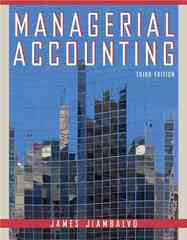Answered step by step
Verified Expert Solution
Question
1 Approved Answer
Please help with accounting problem attached. This is a long problem and all calculations must be shown clearly. I would like to be able to
Please help with accounting problem attached. This is a long problem and all calculations must be shown clearly. I would like to be able to replicate this on my own by looking at your work.
 On January 1, 2016, Parent Corporation acquired 100% of the common shares of Sub Corporation paying $1,800,000 in cash, $350,000 (present value) in contingent performance consideration to be paid if revenue targets are achieved during 2016, and issued 20,000 shares of Parent's common shares ($10 par) at a fair value of $80 per share. Sub will continue to operate as a separate legal entity. In addition to the acquisition, Parent Corp. spent $65,000 in direct combination costs and $28,000 in stock issue costs. In addition, Sub Corporation's computers and equipment (20-year remaining life) were overvalued by $620,000, capitalized software (8-year life) was undervalued by $800,000, Notes payable were overvalued by $100,000 (5-year life), and unrecorded in-process research and development of $680,000 (unlimited life). The net assets of Sub Corp. are provided below: Cash Receivables (net) Inventory Computers and Equipment (net) Capitalized Software (net) In-Process R & D Notes Payable Net Assets Sub Corp's Book Values 1/1/16 $ 430,000 160,000 880,000 3,420,000 1,400,000 0 (4,000,000) $ 2,290,000 1. Prepare the allocation of the acquisition of Sub Corporation; show all of your calculations in good form: 1a. Prepare a schedule calculating the excess amortization as a result of the acquisition above: 2. Prepare the journal entry to record the acquisition of Sub Corp. on January 1, 2016: 3. Prepare the journal entry or entries to record the direct combination costs and the stock issue costs on January 1, 2016: After the combination and the direct combination and stock issue costs were recorded and posted, the post-acquisition balance sheet at January 1, 2016 was as follows: Cash Receivables (net) Inventory Investment in Sub Corp Computers and Equipment (net) Capitalized Software (net) In-Process R & D Goodwill Total Assets Contingent Performance Liability Notes Payable Common Stock--$20 par value Common Stock--$10 par value Additional paid-in capital Retained earnings, 1-1 Total Liabilities and Equity Parent Corp's Sub Corp's Book Values Book Values 1/1/16 1/1/16 $ 940,000 $ 430,000 400,000 160,000 4,500,000 880,000 0 1,350,000 3,420,000 1,240,000 1,400,000 0 0 0 0 6,290,000 (350,000) (2,200,000) 0 (4,000,000) (800,000) (1,200,000) (290,000) (6,290,000) Note: The Investment account and Parent Corp's equity accounts were intentionally left blank, as well as Total Assets and the Parent's equity account balances at 1-1-16. 4. Without preparing a worksheet, prepare Consolidation Worksheet S at January 1, 2016: S 2. Without preparing a worksheet, prepare Consolidation Worksheet A at January 1, 2016: A
On January 1, 2016, Parent Corporation acquired 100% of the common shares of Sub Corporation paying $1,800,000 in cash, $350,000 (present value) in contingent performance consideration to be paid if revenue targets are achieved during 2016, and issued 20,000 shares of Parent's common shares ($10 par) at a fair value of $80 per share. Sub will continue to operate as a separate legal entity. In addition to the acquisition, Parent Corp. spent $65,000 in direct combination costs and $28,000 in stock issue costs. In addition, Sub Corporation's computers and equipment (20-year remaining life) were overvalued by $620,000, capitalized software (8-year life) was undervalued by $800,000, Notes payable were overvalued by $100,000 (5-year life), and unrecorded in-process research and development of $680,000 (unlimited life). The net assets of Sub Corp. are provided below: Cash Receivables (net) Inventory Computers and Equipment (net) Capitalized Software (net) In-Process R & D Notes Payable Net Assets Sub Corp's Book Values 1/1/16 $ 430,000 160,000 880,000 3,420,000 1,400,000 0 (4,000,000) $ 2,290,000 1. Prepare the allocation of the acquisition of Sub Corporation; show all of your calculations in good form: 1a. Prepare a schedule calculating the excess amortization as a result of the acquisition above: 2. Prepare the journal entry to record the acquisition of Sub Corp. on January 1, 2016: 3. Prepare the journal entry or entries to record the direct combination costs and the stock issue costs on January 1, 2016: After the combination and the direct combination and stock issue costs were recorded and posted, the post-acquisition balance sheet at January 1, 2016 was as follows: Cash Receivables (net) Inventory Investment in Sub Corp Computers and Equipment (net) Capitalized Software (net) In-Process R & D Goodwill Total Assets Contingent Performance Liability Notes Payable Common Stock--$20 par value Common Stock--$10 par value Additional paid-in capital Retained earnings, 1-1 Total Liabilities and Equity Parent Corp's Sub Corp's Book Values Book Values 1/1/16 1/1/16 $ 940,000 $ 430,000 400,000 160,000 4,500,000 880,000 0 1,350,000 3,420,000 1,240,000 1,400,000 0 0 0 0 6,290,000 (350,000) (2,200,000) 0 (4,000,000) (800,000) (1,200,000) (290,000) (6,290,000) Note: The Investment account and Parent Corp's equity accounts were intentionally left blank, as well as Total Assets and the Parent's equity account balances at 1-1-16. 4. Without preparing a worksheet, prepare Consolidation Worksheet S at January 1, 2016: S 2. Without preparing a worksheet, prepare Consolidation Worksheet A at January 1, 2016: A Step by Step Solution
There are 3 Steps involved in it
Step: 1

Get Instant Access to Expert-Tailored Solutions
See step-by-step solutions with expert insights and AI powered tools for academic success
Step: 2

Step: 3

Ace Your Homework with AI
Get the answers you need in no time with our AI-driven, step-by-step assistance
Get Started


